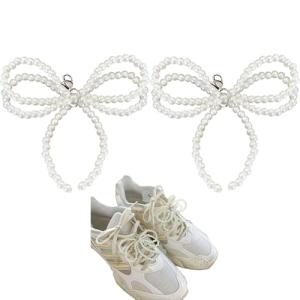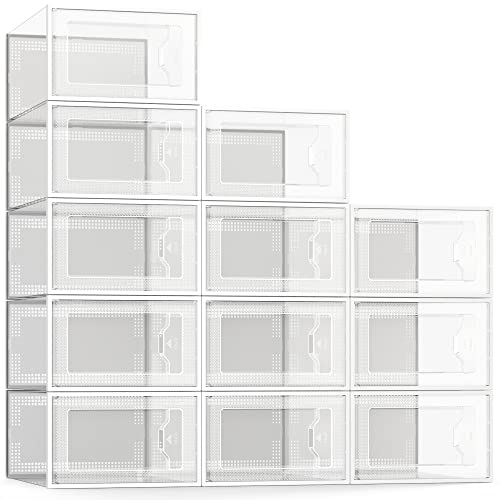Introduction:
Navigating a tennis tournament for the first time can be both exciting and intimidating. Players often experience a mix of emotions as they transition from practice to competition. Being well-prepared can make a significant difference in how well they perform on the court.

To succeed, they need to understand various aspects, such as registration, tournament rules, and effective warm-up routines.
It's crucial to stay calm and focused during matches while also taking time afterward to analyze their performance for future improvement.
With the right approach, players can turn their tournament experience into a valuable learning opportunity.
Key Takeaways
- Preparation is key for a successful tournament experience.
- Understanding the rules helps avoid unnecessary mistakes.
- Analyzing performance after matches leads to improvement.
Preparing for the Tournament
Preparation is key for a successful first tennis tournament. Different factors come into play, from understanding the tournament structure to ensuring the right gear and conditioning.
Understanding Tournament Structure
Knowing how the tournament is organized helps players feel more confident.
Each tournament has a specific format, usually either single elimination or round-robin.
- Single Elimination: Players compete in matches. Losers are out, and winners advance until a champion is crowned.
- Round-Robin: Each participant plays against every other player. The player with the most wins is the champion.
It is essential to understand match rules, scoring, and the schedule. Check-in times and locations also need to be confirmed.
This allows players to arrive prepared and avoid last-minute surprises.
Essential Gear and Equipment
Using the right equipment enhances performance during matches. Key items include:
- Racquet: Choose a racquet that feels comfortable and suits their playing style.
- Tennis Balls: Ensure to bring approved balls for the tournament.
- Clothing: Wear breathable, moisture-wicking attire. A good pair of tennis shoes that provide support and grip is crucial.
Having a reliable sports bag to organize gear will save time and reduce stress.
Keeping personal items like sunscreen and water bottles on hand is equally important for hydration and sun protection.
Physical and Mental Conditioning
A good fitness routine prepares the body for the demands of a tournament. Players should focus on:
- Endurance: Incorporating cardiovascular exercises like jogging or cycling.
- Strength Training: Focus on core and leg workouts for better stability and power.
- Flexibility: Stretching can prevent injuries and help with agility during matches.
Mental readiness is just as important. Techniques such as visualization and breathing exercises can help reduce anxiety.
Staying positive and focused during practice can translate to better performance on tournament day.
Registration and Rules

Understanding how to register for a tennis tournament and knowing the rules is crucial for any beginner. This ensures a smooth experience from the start.
Signing Up for the Event
To sign up for a tennis tournament, players must first find the event they want to enter. This can usually be done through local clubs, tennis associations, or online platforms.
Each tournament will have its own entry deadline.
Players typically need to provide personal details, like their name and contact information.
In some cases, they may also need to submit their ranking or playing level.
Most tournaments require an entry fee.
This fee can vary based on the event's level and location. Payment methods usually include credit cards, online payment systems, or cash.
Make sure to review your application before submitting it.
Navigating Tournament Regulations
Each tennis tournament has rules that players must follow. These regulations include match formats, age categories, and scoring methods. Knowing these rules is essential for fair play.
Players should check the specific requirements for their event.
This might include dress codes, required equipment, and warm-up times.
Additionally, understanding the code of conduct is important.
Players must respect their opponents, officials, and the tournament organizers. Any violation can result in penalties, including disqualification.
Familiarizing yourself with the tournament’s schedule is also key.
This allows players to prepare for their matches and avoid any surprises.
Always stay updated on any potential changes to the event’s format or rules.
Warm-Up and Practice Routines

Preparing for a tennis tournament requires effective warm-up and practice routines. These routines help players increase performance, reduce injuries, and build confidence.
On-Court Warm-Up Strategies
A solid on-court warm-up gets players ready for competition.
It typically starts with light jogging to increase heart rate. Following that, players can perform dynamic stretches, which include lunges and high knees.
Next, it's important to practice specific tennis movements.
Players should engage in side-to-side shuffles and short sprints. This prepares their bodies for the movements they will use during the match.
Finally, hitting drills are essential.
Players should focus on hitting groundstrokes, volleys, and serves.
Practicing with a partner allows them to simulate match conditions and refine their racket skills.
Engaging in these activities helps players feel more comfortable when it's time to play.
Off-Court Preparation Techniques
Off-court preparation holds equal importance.
Stretching and flexibility exercises can enhance performance and prevent injuries. Focus on major muscle groups like hamstrings, quads, and shoulders.
Visualization techniques also play a key role.
Players can visualize successful shots and match scenarios. This mental practice can boost confidence and reduce anxiety.
Additionally, nutrition and hydration should not be overlooked.
Eating a balanced meal before a match provides energy. Drinking water keeps players hydrated.
Overall, effective preparation both on and off the court builds a strong foundation for success in tournaments.
During the Tournament

Competing in a tennis tournament can be both exciting and challenging. Players must focus on their match strategies, manage pressure during play, and ensure they recover effectively between matches.
Match Strategy and Adaptation
In a tournament, having a solid match strategy is crucial.
Players should study their opponent's playing style.
Is the opponent aggressive or defensive? Understanding this helps to tailor their game plan.
A player might start with a strong serve to establish control.
They can also vary their shots, using topspin, flat, and slice to keep the opponent guessing.
Being adaptable is key. If a strategy isn't working, it's essential to adjust quickly.
Additionally, keeping track of game momentum can make a big difference.
Players should recognize when to attack and when to play defensively. A good mix of offensive and defensive play can lead to success.
Handling Pressure and Setbacks
Managing pressure during a match is a skill every player must develop.
Breathing techniques can help calm nerves before serving or receiving.
Focusing on the process rather than the result allows players to stay in the moment.
Setbacks, such as losing a set or making mistakes, can lead to frustration.
It's important to stay positive and focus on what can be controlled.
Practicing resilience will help players recover mentally.
They should remind themselves of past successes to maintain confidence.
Finding a routine during matches, like adjusting strings or taking deep breaths, can help center focus and reduce anxiety.
Between-Matches Recovery
Recovery between matches is vital for maintaining energy and performance.
Players should hydrate effectively to replace lost fluids.
Having healthy snacks, such as fruits or granola bars, can help restore energy levels.
Taking time to stretch is also important.
This not only prevents injuries but helps relieve muscle tension.
Gentle exercises, like walking or yoga, can promote circulation and relaxation.
Players should also aim for quality rest.
This could mean finding a quiet space to relax or using music to unwind before the next match.
After the Match: Analysis and Improvement
Analyzing performance after a match is key to growth in tennis. This process includes self-evaluation and developing a plan for long-term skill improvement.
Self-Evaluation and Feedback
After a match, players need to reflect on their performance. They should ask themselves specific questions:
- What shots worked well?
- What areas need improvement?
- Did they manage their emotions effectively during the game?
Writing down thoughts can help clarify these areas.
Seeking feedback from coaches or fellow players is also valuable. They may notice things a player missed.
Constructive criticism can offer insights on technique or strategy.
Players should focus on both strengths and weaknesses to create a balanced view of their performance.
This honest self-assessment is essential for making targeted adjustments in future practices.
Long-Term Skill Development
Long-term skill development requires setting clear and achievable goals.
Players can break these down into smaller, measurable steps. For example:
- Improve serve accuracy by practicing at least 15 minutes each session.
- Work on footwork drills twice a week.
Consistency is crucial. Regular practice leads to gradual improvement.
Players should track their progress to stay motivated.
They can use journals or apps to log performance and training sessions.
This data can highlight growth and areas still needing work.
Establishing a strong foundation of skills will help them perform better in future tournaments.
Frequently Asked Questions
Preparation for a tennis tournament involves physical exercises, mental strategies, and ensuring proper nutrition. Knowing what to bring can also make a significant difference in the experience.
What types of exercises are best for physical preparation before a tennis tournament?
Beginner players should focus on drills that improve speed, agility, and endurance.
Exercises such as sprints, footwork drills, and strength training for the legs and core will help prepare them physically.
Additionally, practicing strokes and volleys enhances tennis-specific skills.
What mental preparation strategies are recommended for athletes competing in their first tennis tournament?
Visualization techniques can help players imagine themselves succeeding in matches.
Setting clear, achievable goals for the tournament can also reduce anxiety.
Practicing mindfulness or breathing exercises prepares them to stay calm during competition.
How can a beginner tennis player manage tournament nerves and maintain focus?
Players should develop a routine to follow before matches.
This could include warm-up exercises or listening to music.
Focusing on the present moment and employing positive self-talk helps to maintain concentration during play.
Which tactical approaches should a novice tennis player implement during tournament matches?
It is important for beginner players to keep the ball in play and focus on consistency.
They should also target their opponent's weaknesses and vary the pace of their shots.
Using simple strategies like hitting cross-court shots can help control the game.
How important is nutrition in the days leading up to a tennis tournament, and what should one eat?
Nutrition plays a crucial role in performance and energy levels.
Players should eat a balanced diet rich in carbohydrates, proteins, and healthy fats.
Hydration is also vital, so drinking plenty of water is recommended leading up to the tournament.
What are the essential items to pack for participating in a tennis tournament?
Players should pack their tennis racquets, appropriate footwear, and extra clothing for changing.
Snacks, water, and personal items such as sunscreen and a first-aid kit are also important.
Bringing any required tournament documentation ensures readiness on the day of the event.







